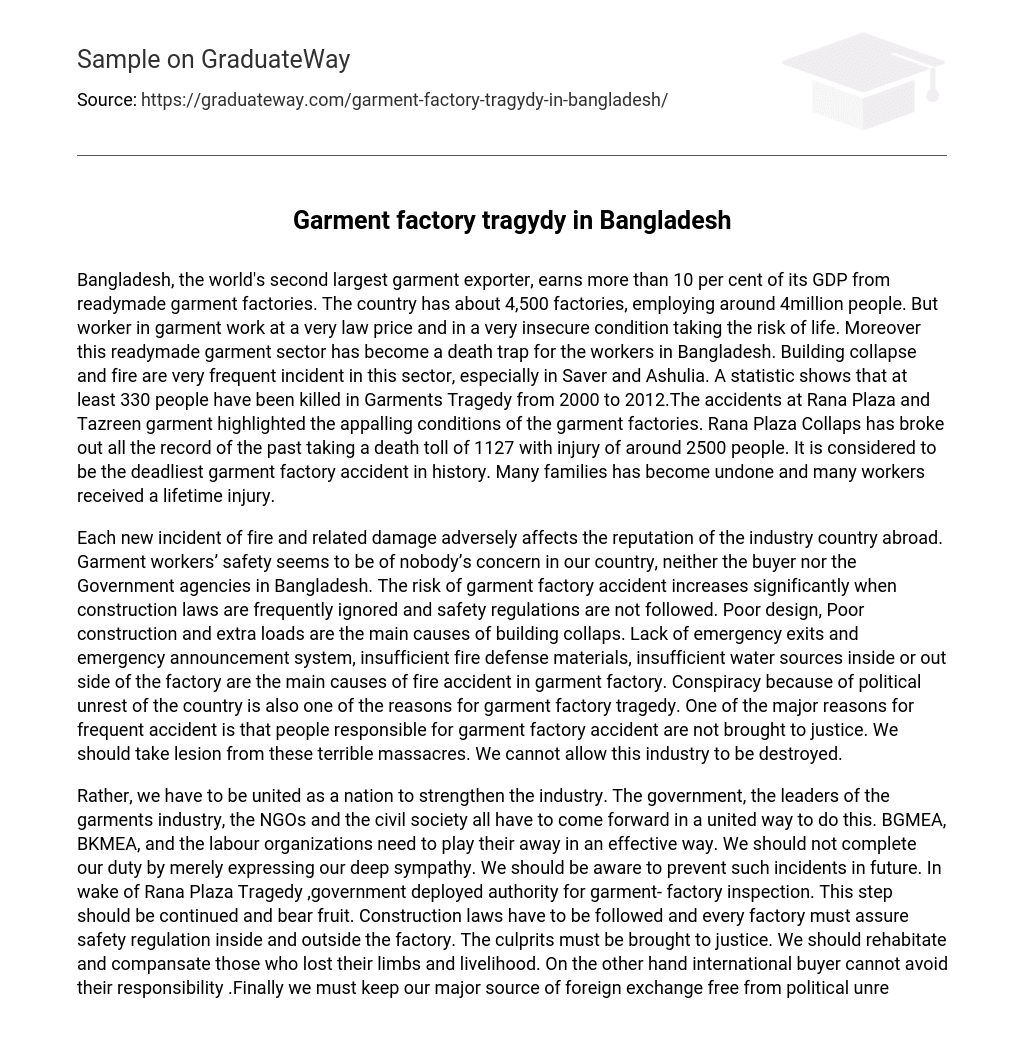Bangladesh is the second largest exporter of garments in the world, accounting for over 10% of the country’s GDP. The sector employs approximately 4 million workers across about 4,500 factories. However, this industry faces numerous challenges including low wages, job insecurity, and hazardous working conditions. In particular, Saver and Ashulia are notorious for frequent building collapses and fires that have tragically resulted in loss of lives. Between 2000 and 2012 alone, at least 330 people died due to such tragedies associated with garment factories.
The deplorable conditions endured by workers gained attention following accidents at Rana Plaza and Tazreen garment factories. Among them, the collapse of Rana Plaza was particularly devastating as it caused the deaths of 1,127 individuals and injured around 2,500 others. This incident remains the deadliest accident ever recorded in garment factory history. These incidents have shattered countless families and inflicted lifelong injuries on many workers.
The reputation of the industry and the country is damaged at an international level with each new fire incident and related damage. Concerns about the safety of garment workers in Bangladesh are also raised. It seems that no one, including buyers and government agencies, prioritizes the safety of these workers. Ignoring construction laws and disregarding safety regulations significantly increases the risk of accidents in garment factories. Building collapses are mainly caused by poor design, construction, and excessive loads. Factors such as a lack of emergency exits and announcement systems, inadequate fire defense materials, insufficient water sources inside and outside the factory can be traced back to fire accidents in garment factories. The political unrest in the country can contribute to conspiracies leading to tragedies in these factories as well. The lack of accountability for those responsible is a major issue contributing to these frequent accidents. We must learn from these horrific incidents and take action to prevent further destruction of this industry.
The unity and strengthening of our nation’s garment industry is crucial, rather than relying on individual actions. To achieve this, it is essential to involve various stakeholders such as the government, industry leaders, NGOs, civil society, BGMEA, BKMEA, and labor organizations. Mere sympathy is insufficient; proactive measures are necessary to prevent future incidents like the Rana Plaza Tragedy. The government has taken a significant step by inspecting garment factories with authorities. It is important for this initiative to continue and produce positive results.
Vital importance lies in strictly complying with construction laws and safety regulations both inside and outside factories. Those responsible for the tragedy must face accountability through proper legal channels. Rehabilitation and compensation should be provided to those who have suffered physical injuries and loss of livelihood.
International buyers cannot evade their responsibility in this matter either. We must also ensure that political unrest and corruption do not disrupt our primary source of foreign exchange.





